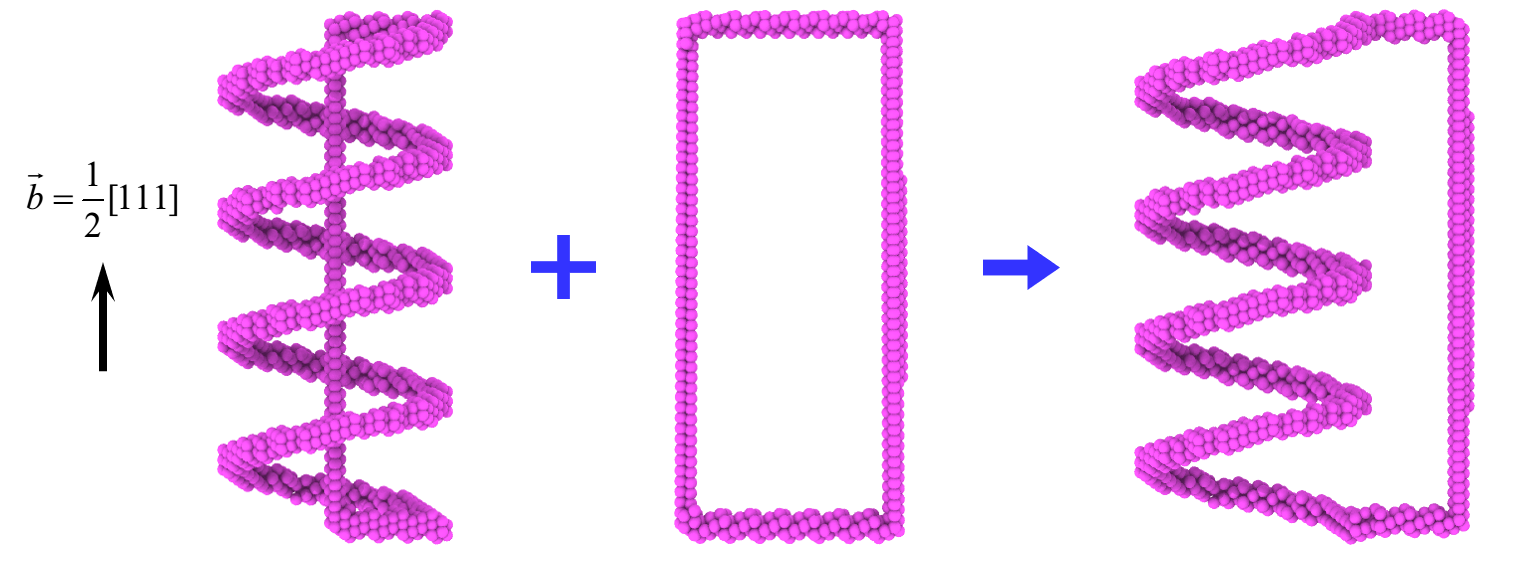8.5. Dislocation helix with a loop

To create a dislocation helix combined with a loop,
Step 1:
Use the tool in subdirectory tools/Bcc to creat a BCC crystal sample:
bcc_reg.lmp, use the shell script in subdirectory tool/Helical_surface to create the mesh of a helical surface:mesh.dat;
Step 2:
Open terminal, run the following command:
1CryDisGen para_file bcc_reg.lmp
Parameter file
Content of the para_file:
1#line starting with '#' are comments
2#crystal region definition
3Region
4-x 1 -1 0 # lattice orientation along x-axis
5-y 1 1 -2 # lattice orientation along y-axis
6-z 1 1 1 # lattice orientation along z-axis
7-lat 2.867 # lattice constant of Fe
8-pbc 1 1 1 # boundary condition flags along x/y/z-axes: '1' for periodic, '0' for non-periodic
9
10nHelix 1
11Helix
12-bvh 1 1 1
13-bsh 1/2
14-f mesh.dat
15
16#dislcoation
17nLoop 1 # number of dislocaiton loops
18Loopn # label for dislocation loop section
19-bv 1 1 1 # orientation of Burgers vector
20-bs -1/2 # scalar coefficient of Burgers vector, e.g., 1/2 in 1/2<110>
21-dnorm 1 -1 0 # normal direction of dislocation plane
22-dc 0 25 0 # center of dislocation loop
23-dr 25 # half of the edge length of a square loop
24-lx 1 1 -2 # local x-axis on the dislocation plane
25-ly 1 1 1 # local y-axis on the dislocation plane
26-ndisl 4 2.4 # number of segments/vertices in the square loop and a scaling factor
Important
In this example, the parameter tag ‘-ndisl’ accepts two arguments. When only a single argument is specified, the resulting dislocation loop assumes a square geometry. If a second argument is provided, it serves as a scaling factor for the loop edge oriented along the direction defined by the ‘-ly’ tag, thereby enabling the generation of rectangular loop configuration.